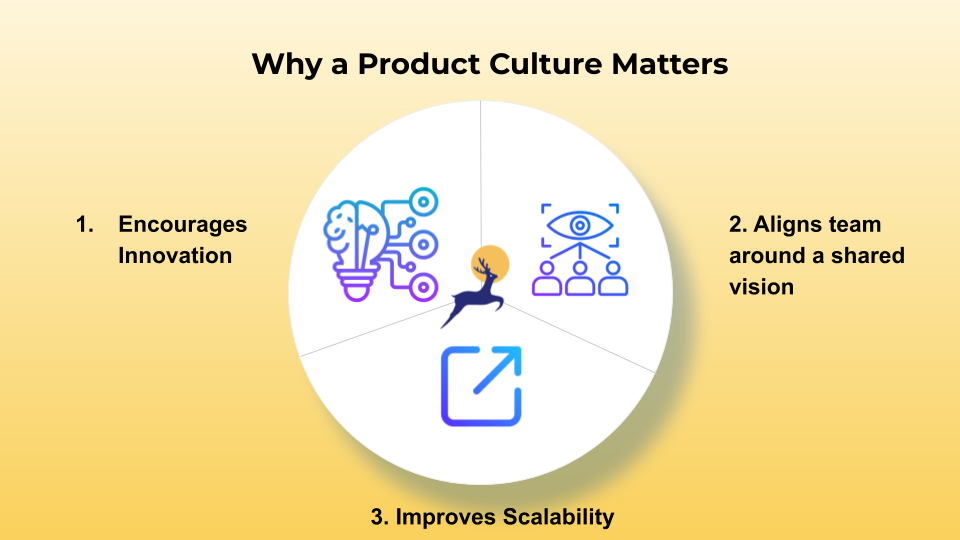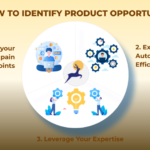
How to Build a Strong Product Culture in Your Service Company
- Sukanya Bharati
- November 19, 2024
- Blog
- 0 Comments
Shifting from an IT service-only business model to one that includes products, platforms, or accelerators can seem challenging. However, the key to a successful transition lies not only in developing new offerings but in fostering a culture that supports innovation, collaboration, and customer-centric thinking. Building a product culture within your service company can empower teams, streamline processes, and ultimately help create products that resonate with your target audience.
Let’s explore actionable steps for IT service companies to build a robust product culture and successfully integrate products into their existing business models.
Why a Product Culture Matters
A product culture refers to an environment where every team member, regardless of their department, understands and contributes to the creation of products that solve customer problems. This culture helps ensure that product development is aligned with market needs and business goals.
The Benefits of a Product Culture:
- Encourages Innovation: A product-focused culture fosters creative thinking and problem-solving, which is essential for staying competitive.
- Aligns Teams Around a Shared Vision: When every department works toward creating a product that addresses real customer needs, collaboration becomes seamless and more effective.
- Improves Scalability: A strong product culture helps create products that can scale efficiently, reducing the dependency on resource-intensive service models.
Step 1: Leadership Buy-In
For any significant cultural shift, leadership support is critical. Leaders must champion the transition to a product-focused approach and ensure that the entire organization is aligned with this vision.
Actions for Leadership:
- Champion the Change: Leaders should communicate the importance of product development and product thinking to the organization.
- Invest in Product Expertise: Hire or train a skilled product management team that will be responsible for overseeing product development and ensuring alignment with customer needs.
- Provide Resources and Support: Leaders should allocate necessary resources, both in terms of time and budget, to support product development efforts across teams.
A strong commitment from leadership will not only set the direction for the company but also create an environment where product innovation is prioritized.
Step 2: Cross-Functional Collaboration
One key challenge for service companies when transitioning to product development is an add-on is fostering collaboration across departments. In traditional service businesses, teams are often siloed, with each department working independently. However, product development requires input from various functions, including service delivery, marketing, design, and engineering.
Key Collaboration Practices:
- Create Cross-Functional Teams: Build teams that include members from diverse departments (e.g., marketing, engineering, and service delivery) to collaborate on product development.
- Adopt Agile Methodologies: Agile frameworks allow for flexibility and collaboration, enabling teams to iterate quickly and adjust products based on feedback.
- Share Customer Insights: Ensure that customer-facing teams, such as sales and support, regularly share insights about customer pain points to help shape the product.
Encouraging collaboration ensures that your product’s development is efficient and relevant to your customers.
Step 3: Foster a Customer-Centric Mindset
Building a successful product requires deep empathy for your customers. A strong product culture revolves around understanding and solving customer problems, which should be the foundation of every product decision.
How to Foster a Customer-Centric Culture:
- Gather Continuous Feedback: Set up regular feedback loops with your customers. Use surveys, customer interviews, analytics, and usability testing to inform product decisions.
- Empower Customer-Facing Teams: Your sales, customer support, and service teams have valuable insights into customer needs. Ensure they have a voice in the product development process.
- Use Empathy-Driven Design: Design your products with the user experience in mind. Focus on making it easier for customers to solve their problems using your product.
When every team in your company is focused on solving real customer challenges, you’ll create products that have true value in the market.
Step 4: Training and Skill Development
Building a product culture isn’t just about hiring new talent; it’s also about upskilling your current employees and fostering a mindset that embraces product development.
Training Tips:
- Product Management Training: Invest in product management training for your teams, especially those who will be directly involved in product development, to ensure they understand best practices and methodologies.
- Encourage a Growth Mindset: A product culture thrives when employees are encouraged to take risks, experiment, and learn from failure.
- Cross-Departmental Workshops: Organize workshops where service teams and product teams can collaborate, brainstorm, and align on product goals.
By investing in skill development, you’ll ensure that your team has the expertise needed to create and launch successful products.
Step 5: Measure and Iterate
Creating a product culture is an ongoing process that requires continuous feedback, measurement, and iteration. To be successful, you need to keep refining your products based on both customer feedback and internal assessments.
Key Metrics to Track:
- Product Adoption Rates: Measure how quickly and widely your product is being adopted by customers.
- Customer Satisfaction: Use tools like NPS (Net Promoter Score) and customer surveys to gauge satisfaction and identify areas for improvement.
- Product Performance: Track product-specific metrics, such as retention rates, engagement levels, and sales growth.
Using these metrics, you can adjust your product strategy and fine-tune your offerings to meet the market’s evolving needs.
Conclusion: Creating a Sustainable Product Culture
Building a product culture within your service company is essential for long-term success. It helps encourage innovation, fosters collaboration, and aligns your teams around customer needs. By following the steps outlined above—gaining leadership buy-in, fostering cross-functional collaboration, focusing on the customer, investing in training, and measuring progress—you’ll be well on your way to building a sustainable and scalable product culture.
As you make this transition, remember that building a product culture takes time, but with commitment and effort, it can significantly transform your business model by unlocking new revenue streams, and ensuring long-term growth.
Are you ready to take your next step?



